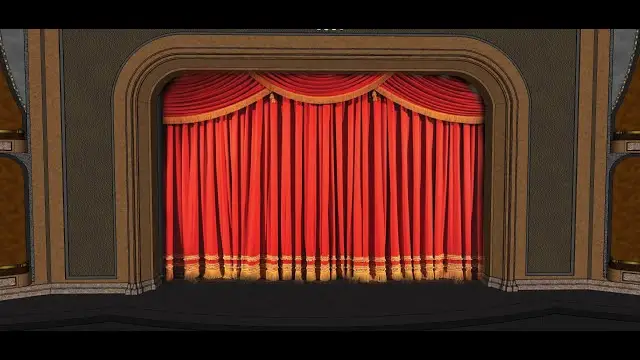
Theatre. A Theatre style seating arrangement it the simplest, and most common, arrangement used in events. The style reflecting the seating found in a theatre or cinema with chairs aligned in consecutive straight rows.
What are the 3 different levels of seating in the theater?
Understanding the Theatre’s Layout Take a look at the Seating chart below. The three primary seating sections in a Broadway Theatre are: The Orchestra (green section), The Mezzanine (in blue), and The Balcony (purple).
What is the best seating in a theatre?
Movie Theater Seats: Front or Back – Let’s first settle this debate. It’s safe to say that the back is better. If you take the chance of sitting in the front row, your neck will probably start to feel sore looking directly up at a movie screen. You don’t want to ruin your movie-going experience with a bad neck.
Why do theater styles change?
There are four basic theatrical forms either defined, implied, or derived by or from Aristotle: Tragedy; Comedy; Melodrama; and Drama. Any number of styles can be used to convey these forms. A good working definition of, “Style”, is how something is done.
Which seating arrangement is a better version of conference seating?
8. U-shaped –  U-shaped or horseshoe seating features a group of tables in the shape of a box with a hollow center and one open end. Make up for the loss of floor space by placing decorative or presentation materials on the walls. Use this type of seating arrangement for attendees who have worked together before or are planning to do so in the near future to facilitate relationship-building. Pros:
U-shaped or horseshoe seating features a group of tables in the shape of a box with a hollow center and one open end. Make up for the loss of floor space by placing decorative or presentation materials on the walls. Use this type of seating arrangement for attendees who have worked together before or are planning to do so in the near future to facilitate relationship-building. Pros:
Ideal for both presentations and group collaborationEveryone can see each other at all timesAudience can comfortably interact with speakers
Cons:
Requires a facilitator or designated leader to help keep the dialogue goingNot suitable for large groups over 30 participants
Best for:
Team meetingsPresentations
What are the 4 types of theatre spaces?
Theatre Spaces, part 1 Introductory remarks: Theatre as an expression of human needs, dreams, desires, and fears predates written history. It has always been a multimedia and a multipurpose activity. Earliest records on cave walls and in ancient sculpture indicate that performance involved a combination of music, dance, and imitation or acting. The goals of the performance were at once spiritual, social, educational, and entertaining. The conditions of production and reception of theatre today are also more complicated than many other art forms, due to the number of artists, complexity of media, and audience formation customary in the theatre.
An analysis of the audience, artists, and media in the theatre can provide a solid definition of theatre and point to the features that distinguish theatre from other art forms. The only necessary components of a theatrical production are a live performer and a live audience. However, most theatre today involves many more artists, technicians, and business employees.
In this course you will learn some detail about the work of the performer, playwright, set designer, costume designer, lighting designer, sound designer, director, and dramaturge. The media of theatre range from the playwright’s words to the actors themselves to the material used in creating scenery, costumes, lighting, and sound The defining features of a theatre audience are that it is live and it is made up of many individuals, who bring a variety of expectations to the performance.
- The live presence of both actors and audience distinguish theatre from its sister dramatic arts of film and television.
- Along with the live presence of an audience, group reception distinguishes performing arts (theatre, dance, and music) from plastic arts like sculpture.
- In the United States today, theatre exists on many levels: professional, semi-professional, educational, amateur, and personal performance.
New York’s Broadway and Off-Broadway are the center of theatrical activity in the United States, and by it we tend to judge the vitality and originality of American theatre in general. However, professional regional theatres and touring productions bring shows to most urban centers across the country.
In addition, many other cities have large numbers of active theatres: Chicago calls itself the “Second City” because of its theatrical activities being second in scale to New York, and Los Angeles and Toronto are almost as active. New York’s Off-Off-Broadway theatres, many local theatres in cities across the country, and most summer stock companies are semi-professional, in that they hire some professional (unionP workers, pay others on a lower scale, and may also involve volunteer amateurs.
Most universities offer training in theatre, either at a pre-professional level and/or as part of a liberal arts experience; they also offer a varied season of performances to their communities at reasonable prices (as you will discover in this course).
What is continental style seating?
Definition of continental seating – : theater seating with no center aisle and with room enough between rows to allow easy passage
How does the V shape Theatre style differ from the traditional Theatre style setup?
Chevron Setup – The chevron or V-shaped setup is actually similar to a classroom arrangement but tables and chairs are angled for better line of vision and engagement between participants themselves as well as with the speaker. Chevron Shaped Seating Arrangement Pros :
It basically mimics the classroom setup but with improved view from outer ends to give participants better line of vision.Tables give members the space to take notes and user their devices.It can maximize seating capacity and is good for large groups.It allows for small group exercises for people sitting at the same table.
Cons :
Participants are not facing each other and some will be behind others; this does not encourage active listening, and can still hinder line of vision in this way.
Similarly to the classroom setup, the chevron shape is suitable for training sessions and workshops where instructions and individual work dominate.
What is Chevron style seating?
What is chevron style seating? – Chevron style seating uses rows of chairs with or without tables that are placed on an angle. For medium or large groups, one or more aisleways are placed either towards the middle or on a diagonal to complement the shape.
What does cabaret style seating mean?
2. Cabaret – Cabaret is generally used when the attendees are required to listen to a presenter for a portion of the day and then break off into smaller groups for workshop style sessions. The setup involves a number of round (or oval) tables with 6-8 chairs around each.
There is a space left at the section of the table closest to the presenter so that everyone has a clear view of the presenter without needing to turn around. For this reason, we generally try to limit the seats per table (for round tables) to 6 as it allows everyone to sit comfortably. It’s important to ask the venue whether they have round or oval tables and how many chairs per table the capacity chart is based on – generally they base this on 8 per table.
Cabaret is a good option as it offers all attendees the opportunity to lean on a table to take notes and makes it easy to break off into the workshop style sessions. Venues will generally set the table with a glass, notepad and pen on each place setting and a jug of water to share.
What is continental style seating?
Definition of continental seating – : theater seating with no center aisle and with room enough between rows to allow easy passage
What is Chevron style seating?
What is chevron style seating? – Chevron style seating uses rows of chairs with or without tables that are placed on an angle. For medium or large groups, one or more aisleways are placed either towards the middle or on a diagonal to complement the shape.
What is cabaret style seating plan?
What is cabaret style seating? – It’s similar to banquet style seating, but it differs in one key area. Usually, cabaret style seating features round tables with chairs placed 2/3 of the way around. This leaves an open end at each table, which directs an audience’s attention to a focal point, such as a stage. 
What is gold seats in theatre?
Gold class in PVR refers to the highest three rows of auditoriums, and ticket prices are slightly more than silver, which is immediately below gold. Gold and Silver Tickets are two types of movie tickets that may be acquired for a reasonable price and used to see any film.
